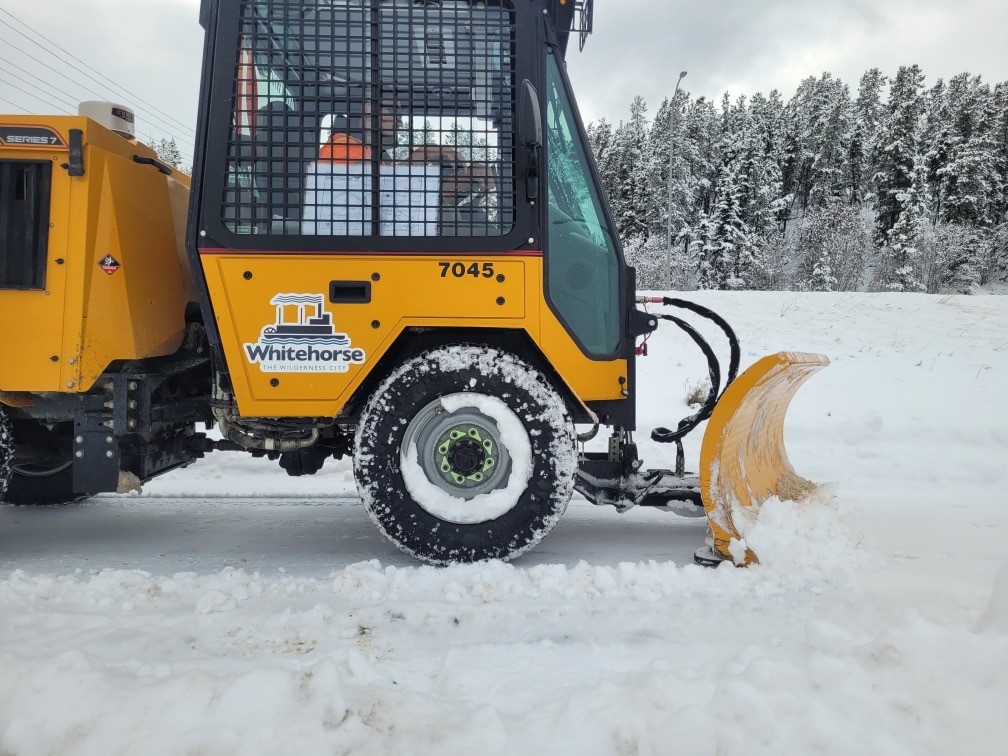Hamilton Boulevard Paved Trail

New Pilot Project (2025-2027)
Starting in November 2025, the Hamilton Boulevard paved trail (from the Alaska Highway to North Star Drive) will be designated as a Priority 1 trail under the City's Snow and Ice Control Policy.
This is a two-year pilot project approved by City Council that will start this winter and continue until the spring of 2027.
Maintenance plans
Priority 1 roads and paved trails are typically ploughed to remove snow as close to the road or trail surface as possible.
For this pilot project, based on consultation with stakeholders, the City's goal is to leave a thin, hard packed layer of snow so that the trail can accommodate both active transportation users (e.g., pedestrians and cyclists) as well as snowmobiles.
This is a novel approach for paved trails within the city and the pilot project will be an experiment.
The Hamilton Boulevard paved trail includes some sections with steep grades and some sections with little to no shoulder space alongside the trail. This creates challenges for maintenance, including access of maintenance equipment and the need for de-icer and sanding to address ice and other slippery conditions. The City will respond to weather conditions throughout the winter and will likely need to try a range of different treatments to achieve the optimal conditions to support the maximum amount of trail users.
Put simply, this will be a trial and error exercise. We appreciate the patience of residents as we embark on this pilot project.
If you see or experience any dangerous conditions or unsafe trail use, please fill out the Report a Problem form.
This will promptly alert the relevant City departments so they can address the issue.
Share your feedback
As we embark on this pilot project, we want to hear from residents that use the Hamilton Boulevard paved trail.
Below you will be able to ask questions, post observations and suggestions, and help us figure out how to ensure this trail meets the winter needs of users in our community.
Sharing our trails with all users
Trail users are reminded to use caution at all times, pay attention to prevailing weather conditions, and be mindful of safely sharing the trail with the full range of trail users (e.g., pedestrians, dogs, runners, cyclists, all-terrain vehicles, snowmobiles).
The City works to create conditions to assist transportation network users that are properly equipped for winter conditions and paying due care and attention to winter conditions.
Pedestrians
- When at a designated pedestrian crossings, look both ways and wait for vehicles to make a complete stop before entering the roadway.
- Listen for oncoming bikes and vehicles - especially when paths are busy or visibility is low.
- As we move into the darker months, it’s time to bring out the reflective clothing or lighting.
- Keep to the right side of the path or trail. Staying to the right makes it easier for other trail users to pass safely. If walking with a dog, make sure they’re on a leash and in control.
Cyclists
- Follow the rules of the road. Stop at traffic lights, use hand signals, and stay in the correct lane for the duration of your route.
- Stop and dismount your bicycle when using pedestrian crosswalks.
- Wear reflective clothes or straps to help other commuters see you. Be sure to use a rear red light and a front white light.
- Watch out for pedestrians. Slow down, stop when needed, and give pedestrians a safe amount of space.
- Give a quick heads-up with your bell or a friendly verbal warning when passing others to avoid startling them.
- Read up on winter cycling tips at bit.ly/40l14V7
Snowmobiles and All-terrain Vehicles
- Be respectful and gear down in town.
- When travelling to the trails within city limits, the Snowmobile Bylaw requires riders to travel respectfully and slowly on trails – especially those close to residential areas.
- On the roadway the maximum speed is 30 km/hr. When operators are travelling on the roadway, it must only be for the purpose of travelling to a permitted area and must be the most direct route.
- Outside the roadway, maximum speed is 50 km/hr unless posted otherwise.
- When approaching or passing a pedestrian, skier or dog, snowmobiles operators must reduce their speed to 15 km/hr.
- When on designated trails snowmobilers are required to follow the posted speed limit - 30km/hr on the Hamilton Boulevard paved trail.
- At pedestrian crossings, pay close attention. Children and those using walking aids or wheelchairs may be less visible in the dark.
- ATVs are not permitted to use the Hamilton Boulevard paved trail between November 1st and March 31st each year.
Trail questions
Do you have questions about the Hamilton Boulevard paved trail and how it is being maintained in the winter?
Ask a question here!
Thank you for your contribution!
Help us reach out to more people in the community
Share this with family and friends